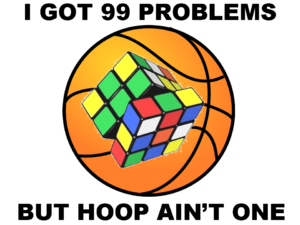
In the grand theatre of life, every person encounters a unique blend of challenges, obstacles, and hardships. While some may view these difficulties as insurmountable barriers, others perceive them as stepping stones to greatness. This dichotomy in perspective often separates the ordinary from the extraordinary. In a world where competition is fierce and success is not handed on a silver platter, embracing the toughness of life and actively seeking out challenges can be the key to outshining your competition. The question is, are you all-in?
The Virtue of Hardship
Life is not designed to be easy. It’s a complex, intricate journey filled with ups and downs, triumphs and setbacks. Embracing this reality is the first step toward mastering the art of overcoming adversity. Hardship serves a critical purpose: it molds us, shapes our character, and fortifies our resolve. As the saying goes, “Smooth seas do not make skillful sailors.” It is through facing and conquering challenges that we grow stronger, wiser, and more capable.
The Competitive Edge
When you actively seek out difficult tasks, you set yourself apart from the majority who prefer the path of least resistance. In every field, be it business, sports, academics, or personal development, those who excel are the ones who are not afraid to tackle the hardest problems. They understand that in doing so, they gain a competitive edge. By confronting and mastering difficulties, they develop unique skills, insights, and resilience that their competitors lack.
Consider the story of Sara Blakely, the founder of Spanx. Before her rise to fame, Blakely faced numerous rejections and setbacks. However, she viewed these challenges as opportunities to innovate and improve. By persevering through tough times and continuously refining her product, she ultimately created a billion-dollar business. Her success was not a result of avoiding difficulties but embracing them and using them to her advantage.
Life is Hard. Build Resilience.
Resilience is the hallmark of those who thrive despite adversity. It is the ability to bounce back from setbacks, to keep pushing forward even when the going gets tough. Building resilience requires a mindset shift. Instead of seeing difficulties as threats, see them as opportunities for growth. Every setback is a setup for a comeback.
Developing resilience involves cultivating a few key attributes:
- Optimism: Maintaining a positive outlook in the face of adversity helps you stay motivated and focused on solutions rather than problems.
- Adaptability: Being flexible and open to change allows you to navigate through challenges more effectively.
- Perseverance: The ability to persist in the face of difficulties is crucial. It’s about keeping your eyes on the prize and not giving up, no matter how tough the journey gets.
Life is Hard. Are You All-In?
To truly excel and outshine your competition, you need to be all-in. This means committing fully to your goals and being willing to do whatever it takes to achieve them. It’s about having an unwavering dedication to your vision and a relentless drive to overcome any obstacles that stand in your way.
Commitment to Excellence
Excellence is not a destination but a continuous journey. It requires a commitment to constant improvement and a willingness to push beyond your comfort zone. To be all-in means striving for excellence in everything you do, whether it’s a small task or a significant project.
Take the example of athletes like Michael Jordan or Serena Williams. Their commitment to excellence is evident in their rigorous training regimens, relentless pursuit of perfection, and refusal to settle for mediocrity. They understand that to be the best, you must give your best effort consistently.
COMMITTED TO Embracing Discomfort
Growth and comfort do not coexist. To achieve greatness, you must be willing to embrace discomfort. This means taking on challenging tasks, facing your fears, and stepping outside your comfort zone regularly. It’s about pushing your limits and discovering your true potential.
COMMITTED TO a Growth Mindset
A growth mindset, as defined by psychologist Carol Dweck, is the belief that abilities and intelligence can be developed through dedication and hard work. This mindset fosters a love for learning and resilience, which are essential for great accomplishment. People with a growth mindset view challenges as opportunities to grow rather than threats to their self-esteem. This is a key aspect of dealing with, and embracing, the hard challenges in your life.
Practical Steps to Embrace Challenges

- Set Big Goals: Aim high and set ambitious goals that require you to stretch beyond your current capabilities. Big goals will motivate you to put in the extra effort and face challenges head-on.
- Break Down Challenges: Break down big challenges into smaller, manageable tasks. This approach makes daunting tasks more approachable and allows you to make consistent progress.
- Seek Feedback: Actively seek feedback from others to identify areas for improvement. Constructive criticism can help you refine your approach and enhance your performance.
- Learn from Failures: View failures as learning opportunities rather than setbacks. Analyze what went wrong, extract valuable lessons, and apply them to future endeavors.
- Stay Persistent: Persistence is key to overcoming challenges. Stay committed to your goals, even when progress seems slow. Remember that persistence often outlasts resistance.
More Resources for overcoming adversity… click here.
Real-Life Examples of Overcoming Challenges

Elon Musk: The founder of SpaceX and Tesla is no stranger to challenges. From facing near-bankruptcy to enduring multiple rocket failures, Musk’s journey is a testament to the power of perseverance and resilience. His ability to learn from failures and keep pushing forward has led to groundbreaking innovations in space exploration and electric vehicles.

J.K. Rowling: Before achieving worldwide fame with the Harry Potter series, Rowling faced numerous rejections from publishers. Despite these setbacks, she continued to believe in her story and persisted in her efforts. Her success is a powerful example of how embracing hardship and staying committed to one’s vision can lead to extraordinary outcomes.
Reflecting on Your Journey
Take a moment to reflect on your own journey. What challenges have you faced, and how have they shaped you? Consider the times when you chose the harder path and the lessons you learned along the way. Acknowledge the strength and resilience you’ve developed through these experiences.
Now, think about your future goals. Are you willing to go all-in? Are you ready to embrace the difficulties that lie ahead and use them as opportunities to grow and excel? Remember, greatness is not achieved by avoiding challenges but by confronting them head-on with determination and grit.
Life is hard. Deal with it.
Life is hard, and that’s what makes it great. It’s the challenges we face and the difficulties we overcome that define our journey and shape our destiny. By embracing hardship, building resilience, and committing fully to our goals, we can outshine our competition and achieve extraordinary success.
So, the next time you encounter a difficult situation, welcome it with open arms. See it as a chance to prove your mettle, to grow stronger, and to rise above the rest. Are you all-in? The path to greatness awaits those who dare to embrace the hard road and give it their all.










 Everyone has problems. If you are alive, you have problems. They might be big, life-changing problems like a diagnosis of cancer or they could be minor inconveniences like a fly buzzing in your ear. That’s not why problem solving tactics don’t work. Problem solving is easier than you think, but I am getting ahead of myself.
Everyone has problems. If you are alive, you have problems. They might be big, life-changing problems like a diagnosis of cancer or they could be minor inconveniences like a fly buzzing in your ear. That’s not why problem solving tactics don’t work. Problem solving is easier than you think, but I am getting ahead of myself. Summer is when you can make huge improvements as a basketball player… especially if you grind. GRINDing is all about
Summer is when you can make huge improvements as a basketball player… especially if you grind. GRINDing is all about